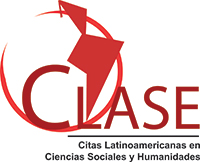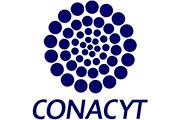“Retorno de la civilización” a Quiriguá: Arqueología maya y los juegos de poder y prestigio en Centroamérica en los siglos XIX y XX
Resumen
Estudiar la historia de las exploraciones arqueológicas de la localidad de Quiriguá, Guatemala, sirve como un punto de partida hacia reflexiones más generales sobre la naturaleza de la disciplina arqueológica, ayudando a situarla en un contexto sociopolítico mucho más amplio. Desde sus inicios en el siglo XIX, la arqueología se ha encontrado bajo la influencia de las ideologías hegemónicas de la época, el nacionalismo y el imperialismo. Estas influencias moldearon la naturaleza de la investigación arqueológica y las presentaciones de sus resultados; sin mencionar algunos otros factores como la competencia institucional y las ambiciones personales de quienes llevaban a cabo las investigaciones, que también se vieron reflejadas en las labores científicas de las expediciones. Específicamente en el caso de Quiriguá, la actitud posesiva de los primeros exploradores (John Stephens, Alfred Mauldsay, etc.) y el subsecuente dominio que ejerció la compañía United Fruit en la zona, así como las aspiraciones de diferentes instituciones científicas estadounidenses (como la School of American Archaeology o la Carnegie Foundation, por decir algunas), son analizadas respecto a las interpretaciones que generaron sobre la civilización maya precolombina. El presente texto no aspira a ser un análisis exhaustivo de los problemas que la relación entre el nacionalismo, el imperialismo y la arqueología, causaron en Latinoamérica; sino la mera presentación de un fenómeno que ayude a ilustrar la necesidad de considerar siempre el contexto político, social y cultural en el que se producen las “verdades” científicas.
Descargas
Citas
Adams, Frederick Upham, (1914) Conquest of the Tropics: the story of the creative enterprises conducted by the United Fruit Company. Garden City, New York: Doubleday Page & Co.
Aguirre, Robert, (2005) Informal Empire: Mexico and Central America in Victorian Culture. Minneapolis: University of Minnesota Press.
Aguirre, Robert, (2012) “The Work of Archaeology: The Maudslays in Late Nineteenth-century Guatemala”, en Mackentun Gesa y Klaus Hock (eds.), Entangled Knowledges: Scientific Discourses and Cultural Difference. Münster: Waxmann. pp. 231-247.
Alford, William V., (1899) “Fragments from Pre-Historic America. The Wonderful Ruins of Quirigua in Central America”, en Home Magazine. 13:2, pp. 143–148.
Aliano, David, (2006) “Curing the Ills of Central America: The United Fruit Company’s Medical Department and Corporate America’s Mission to Civilize (1900-1940)”, en EIAL: Estudios Interdisciplinarios de America Latina y el Caribe. 17:2, pp. 35-60.
Alvarenga Ventulo, Patricia, (2015) “Contemplar y poseer. El poder de la mirada en la disputa por la apropiación de objetos y monumentos de las culturas antiguas de Centroamérica”, en Revista de Historia 71:1, pp. 13-39.
Andrews, E. Wyllys y Frederick W. Lange, (1995) “In Memoriam Doris Zemurray Stone, 1909-1994”, en Ancient Mesoamerica. 6, pp. 95- 99.
Argueta, Mario R., (1989) Bananos y política: Samuel Zemurray y la Cuyamel Fruit Company en Honduras. Tegucigalpa: Editorial Universitaria.
Ashmore, Wendy, (1984) “Quirigua Archaeology and History Revisited”, en Journal of Field Archaeology. 11:4, pp. 365-386.
Blackiston, A. Hooton, (1911) “Quirigua”, en Records of the Past. 10:2, pp. 59-76.
Blom, Frans y Oliver La Farge, (1926) Tribes and Temples: A Record of the Expedition to Middle America Conducted by the Tulane University of Louisiana in 1925. New Orleans: Tulane Universit.
Boggs, S. H., (1946) Guide to the Ruins of Zacaleu. (1946). New York: Middle America Information Bureau/United Fruit Company.
Brunhouse, Robert L., (1971) Sylvanus G. Morley and the World of the Ancient Mayas. United States of America: University of Oklahoma Press.
Brunhouse, Robert L., (1976) Frans Blom, Maya Explorer. Albuquerque: University of New Mexico Press.
Brunhouse, Robert L., (1989) En busca de los mayas: Los primeros arqueólogos. trad. Jorge Ferreiro. México: FCE.
Carpenter, Frank G., (1930) Carpenter’s World Travels: Lands of the Caribbean. Garden City, New York: Doubleday Page & Co.
Catherwood, Frederick, (1844) Views of Ancient Monuments in Central America, Chiapas and Yucatan. London: F. Catherwood.
Chandler, John R., (1896) “Ruins of Quiriguá”, en Science. 3:75, pp. 832- 833.
Chinchilla Mazariegos, Oswaldo, (1994) “Nacionalismo y arqueología en la Guatemala de la Independencia“, en Juan Pedro Laporte y Héctor Escobedo (eds.), VII Simposio de Investigaciones Arqueológicas en Guatemala, 1993. Guatemala: Museo Nacional de Arqueología y Etnología. pp. 1-9.
Colby, Jason M., (2011) The Business of Empire: United Fruit, Race, and U. S. Expansion in Central America. Ithaca: Cornell University Press.
Díaz-Andreu, Margarita, (1999) “Nacionalismos y arqueología. Del viejo al nuevo mundo”, en Revista do Museu de Arqueologia e Etnologia. Suplemento 3, pp. 161-180.
Dietler, Michael, (1994) “‘Our ancestors the Gauls‘: archeology, ethnic nationalism, and the manipulation of Celtic identity in modern Europe”, en American Anthropologist. 96, 584–605. doi:10.1525/ aa.1994.96.3.02a00090
Dosal, Paul, (1993) Doing Business with the Dictators: A Political History of United Fruit in Guatemala, 1899-1944. Wilmington: Scholarly Resources.
Evans, R. Tripp, (2004) Romancing the Maya: Mexican Antiquity in the American Imagination, 1820-1915. Austin: University of Texas Press.
Fowler, Don D., (1999) “Harvard vs. Hewett: The Contest for Control of Southwestern Archaeology, 1904-1930”, en Alice B. Kehoe y Mary Beth Emmerichs (eds.), Assembling the Past: Studies in the Professionalization of archaeology. Albuquerque: Univeristy of New Mexico Press. pp. 213-227.
Fowler, Don D., (2000) A Laboratory for Anthropology: Science and Romanticism in the American Southwest, 1846–1930. Albuquerque: University of New Mexico Press.
Fowler, Don D., (2003) “E. L. Hewett, J. F. Zimmerman, and the Beginnings of Anthropology at the University of New Mexico, 1927-1946”, en Journal of Anthropological Research. 59:3, pp. 305- 327.
Godoy, Ricardo, (1977) “Franz Boas and his plans for an international School of American Archaeology and Ethnology in Mexico”, en International Journal of the History of the Behavioral Sciences. 13:1, pp. 22-42.
Graham, Ian, (1963) “Juan Galindo: Enthusiast”, en Estudios de cultura maya 3. pp. 11-35.
Graham, Ian, (2002) Alfred Maudslay and the Maya. Oklahoma: University of Oklahoma Press.
Guillén, Flavio, (1926) “De Guatemala a Río Dulce, pasando por Quiriguá”, en Anales de la Sociedad de Geografía e Historia. 3:3, pp. 235-243.
Harris, Charles H. y Luis R. Sadler, (2003) The Archaeologist Was a Spy: Sylvanus G. Morley and the Office of Naval Intelligence. Albuquerque: University of New Mexico Press.
Harvey, Bruce A., (2001) American Geographics: U.S. National Narratives and the Representation of the Non-European World, 1830-1865. Stanford: Stanford University Press.
Hewett, Edgar L., (1910) “Report to the Managing Committee of the School of American Archaeology, 1910”, en Bulletin of the Archaeological Institute of America. 2:1, pp. 15-27.
Hewett, Edgar L., (1912a) “The Excavation of Quirigua, Guatemala, by
the School of American Archaeology”, en Proceedings of the XVIIIth International Congress of Americanists. London: Harrison and Sons. pp. 238-240.
Hewett, Edgar L., (1912b) “The Excavations at Quirigua”, Bulletin of the Archaeological Institute of America. 3, pp. 163-171.
Hewett, Edgar L., (1915) “Ancient America at the Panama-California
Exposition”, en Art and Archaeology. 2:3, pp. 65-90.
Hewett, Edgar L., (1916) “Latest Work of the School of American
Archaeology at Quirigua”, en Frederick Webb Hodge y Ella Leary
(eds.), Holmes Anniversary Volume: anthropological essays presented to William Henry Holmes in honor of his seventieth birthday. Washington: J.W. Bryan Press. pp. 157-162.
Hewett, Edgar L., (1936) Ancient life in Mexico and Central America.
Indianapolis: Bobbs-Merrill Co.
Holme, Justin, (2013) Creating Wealth Out of the World’s Waste Spots: The United Fruit Company and the Story of Frontiers, Environment, and American Legacy, 1899-1930, tesis para obtener el grado de maestría. Canada, Department of History and Classical Studies, McGill University. Recuperado de: http://digitool.library.mcgill.a/webclient/StreamGate?folder_id=0&dvs=1547128609626~399 [fecha de consulta:8 10 de enero de 2019]
Holmes, William H., (1916) “Masterpieces of Aboriginal American Art V: The Great Dragon of Quirigua”, en Art and Archaeology. 6:6, pp. 269-278.
Katz, Leandro, (2004) “The Catherwood Project”, en Patrick Frank (ed.), Readings in Latin American Modern Art. New Haven: Yale University Press. pp. 230-232.
Keen, Benjamin, (1971) The Aztec Image in Western Thought. Brunswick. New Jersey: Rutgers University Press, New.
Kennedy, Dane, (2014) “Introduction: Reinterpreting Exploration”, en Dane Kennedy (ed.), Reinterpreting Exploration: The West in the World. Oxford: University of Oxford Press. pp. 1-19.
Lenz, William E., (2012) Ruins, Revolution, and Manifest Destiny: John Lloyd Stephens Creates the Maya. New york: Peter Lang.
Lerner, Jesse, (2005) “The Paradoxes of Quiriguá”, en Journal of Film and Video. 57:1-2, pp. 78–83.
Lewis, Nancy Owen y Kay Leigh Hagen, (2007) A Peculiar Alchemy: A Centennial History of SAR. Santa Fe, Nuevo Mexico: School for Advanced Research.
Long, Boaz (ed.), (1950) Morleyana: a collection of writings in memoriam Sylvanus Griswold Morley, 1883-1948. Santa Fe: School of American Research/Museum of New Mexico.
Looper, Matthew, (2003) Lightening Warrior: Maya Art and Kingship at Quirigua. Austin: University of Texas Press.
Lumis, Charles F., (1916) “Where the Stones Come to Life”, en Art and Archaeology. 4:6, pp. 281-290.
Maudslay, Alfred P., (1886) “Exploration of the Ruins and Site of Copan, Central America”, en Proceedings of the Royal Geographical Society and Monthly Record of Geography. 8:9 (1886), pp. 568-594.
Maudslay, Alfred P., (1899-1902) Archaeology, 4 vols., en F. Duncane Godman y Osbert Salvin, Biologia Centrali-Americana, or, Contributions to the Knowledge of the Fauna and Flora of Mexico and Central America. London: R.H. Porter/Dulau & Co.
Maudslay, Anne Cary y Alfred Percival Maudslay, (1899) A Glimpse at Guatemala and some notes on the Ancient Monuments of Central America. London: John Murray.
Maxwell, Anne (2000) Colonial Photography and Exhibitions: Representations of the “Native” and the Making of European Identities. London/New York: Leicester University Press.
Morley, Sylvanus G., (1912) “Quirigua, an American Town 1400 Years Old: Glimpses of an Extinct American Civilization”, en Scientific American. 107:5, pp. 96-97, 105.
Morley, Sylvanus G., (1913) “Excavations at Quiriguá, Guatemala”, en National Geographic. 24:3, pp. 339-361.
Morley, Sylvanus G., (1923) “Diary of Sylvanus Griswold Morley, 1912, Quirigua Field Notes”, en Archive of the American Philosophical Society. Fondo Mss.B.M828 (Sylvanus Griswold Morley Diaries). Vol. 15. pp. 85-86.
Morley, Sylvanus G., (1936) Guía de las ruinas de Quiriguá, trad. Adrián Recinos. Washingon: Carnegie Institution.
Nilsen, Micheline, (2011) Architecture in Nineteenth Century Photographs: Essays on Reading a Collection. Farnham: Routledge.
Ortega y Medina, Juan, (1962) “Monroismo arqueológico: Un intento de compensación de americanidad insuficiente”, en Ensayos, tareas y estudios históricos. Xalapa: Universidad Veracruzana. pp. 37-86.
Recinos, Adrian, (1953-54) “Evocación del viaje de Scherzer y Wagner a Centroamérica, 1853-54”, en Anales de la sociedad de geografía e historia de Guatemala. 27, pp. 137-141.
Rutsch, Mechthild, (2000) “El patrimonio arqueológico mexicano y la International School of American Archaeology and Ethnology”, en Ludus Vitalis. Revista de filosofía de las ciencias de la vida. 8:15, pp. 131-164.
Salvatore, Ricardo D., (2016) Disciplinary conquest: U.S. scholars in South America, 1900-1945. Durham, NC: Duke University Press. Sands, W. F., (1913) “Mysterious Temples of the Jungle: The Prehistoric
Ruins of Guatemala”, en National Geographic. 24:3, pp. 325-338. Schávelzon, Daniel, (1978) “El saqueo arqueológico de Guatemala”, en Antropología e Historia: Boletín del Instituto Nacional de Antropología e Historia, 3:22, pp. 57-62.
Schávelzon, Daniel, (1982) “Frans Blom: Crónica de su expedición a México y Guatemala en 1925”, en Anales de antropología 19, pp. 163–183.
Schávelzon, Daniel, (1988), “Las excavaciones en Zaculeu (1946-1950): una aproximación al análisis de la relación entre arqueología y política en América Latina“, en Nicholas J. Saunders - Olivier de Montmollin (eds.), Recent Studies in pre-Columbian archaeology. Oxford: Univeristy of Oxford Press. T. 1, pp. 167-190.
Scherzer, Karl, (1855) “Ein Besuch bei den Ruinen von Quiriguá im Staate Guatemala in Central-Amerika”, en Sitzungsberichte der kaiserlichen Akademie der Wissenschaften in Wien. 16, pp. 228-240.
Scherzer, Karl, (1936) “A visit to Quiriguá”, en Maya Research 3:1, pp. 82- 101.
Schoonover, Thomas David, (1991) The United States in Central America, 1860 - 1911: episodes of social imperialism and imperial rivalry in the world system. Durham: Duke University Press
Sharer, Robert J., (1978) “Archaeology and History at Quirigua,
Guatemala”, en Journal of Field Archaeology 5, pp. 51-70.
Sharer, Robert J. y William R. Coe, (1979) “The Quirigua Project: Origins, Objectives and Research in 1973 and 1974”, en Wendy Ashmore (ed.), Quirigua Reports I. Philadelphia: University of Pennsylvania Press. pp. 1-11.
Sharer, Robert J. y Loa P. Traxler, (2012) “Copan and Quirigua: Shifting Destinies in the Southeastern Maya Lowlands”, en Contributions in New World Archaeology. 4, pp. 139-156.
Shields, Duncan, (2015) “Multiple collections and fluid meanings: Alfred Maudslay’s archaeological photographs at the British Museum”, en Elizabeth Edwards, Christopher Morton (eds.), Photographs, Museums, Collections: Between Art and Information. London/New York: Bloomsbury Academic. pp. 27-46.
Stephens, John Lloyd, (1971) [1841] Incidentes de Viaje en Centroamérica, Chiapas y Yucatán, trad. Benjamin Mazariegos Santizo. San José: Editorial Universitaria Centroamericana. 2 vols.
Stoll, Otto, (1886) Guatemala: Reisen und Schilderungen aus den Jahren 1878-1883. F.A. Leipzig: Brockhaus.
Stone, Doris , (1976) Pre-Columbian Man Finds Central America.
Cambridge, Ms: Cambridge University Press.
Thompson, John Eric Sidney, (1936) “A Note on Scherzer’s Visit to
Quiriguá”, en Maya Research. 3:3, pp. 330-331.
Trigger, Bruce, (1984) “Alternative Archaeologies: Nationalist, Colonialist, Imperialist”, en Man. 19:3, pp. 355-370.
Urías Horcasitas, Beatriz, (2001), “Franz Boas en México“, en Historia y grafía. 16, 209-248.
Vargas, Juan Carlos, (2008) Tropical Travel. The Representation of Central America in the Nineteenth Century. San José: University of Costa Rica.
Viella, Khristaan D., (2012) “Simulacrum, simulacrum on the wall: casts of the ancient Maya monuments of Quiriguá”, en Pasatiempo. April 27 – May 3, pp. 36-40.
Woodbury, Richard B. y Aubrey S. Trik, (1954 ) The Ruins of Zaculeu. New York: United Fruit Company.
Yde, Jens, (1936) “A preliminary report of the Tulane University – Danish National Museum Expedition to Central America 1935”, en Maya Research. 3:1, pp. 25-37.
Fuente de las imágenes:
Adams, Frederick Upham, (1914) Conquest of the Tropics: the story of the creative enterprises conducted by the United Fruit Company. Garden City, New York: Doubleday Page & Co.
Library of Congress (1908) “Guatemala, Quiriguá”, en Library of Congress. [en línea]. Washington, recuperado de: https://www.loc.gov/item/2016821509/ [consultado el día 21 de junio de 2019)
Library of Congress (1908) “Guatemala, Quiriguá stone image”, en Library of Congress. [en línea]. Washington, recuperado de: https://www.loc.gov/item/2016821509/ [consultado el día 21 de junio de 2019)
Derechos de autor 2019 EntreDiversidades

Esta obra está bajo licencia internacional Creative Commons Reconocimiento-NoComercial-SinObrasDerivadas 4.0.








